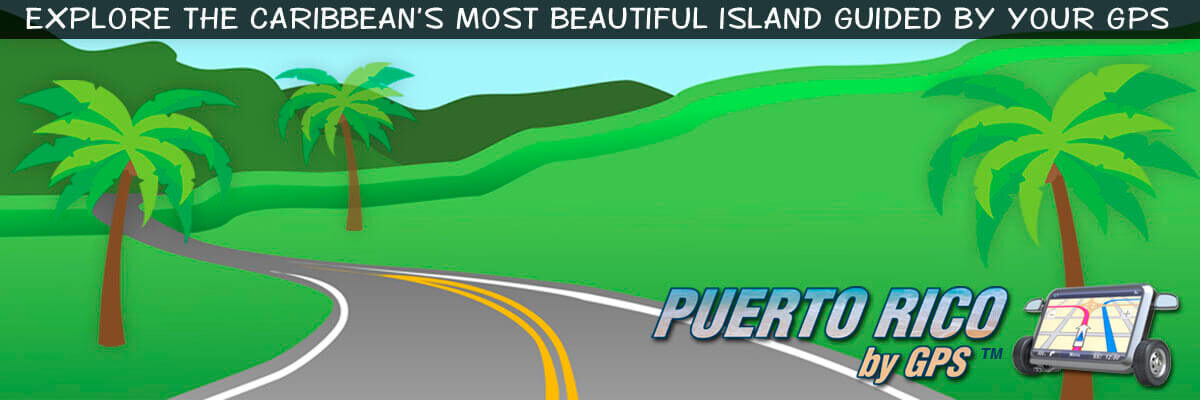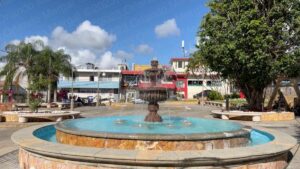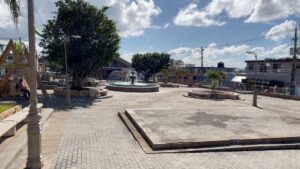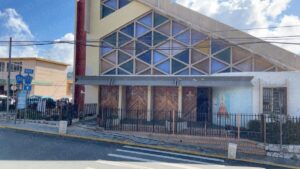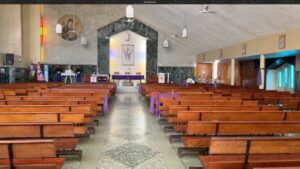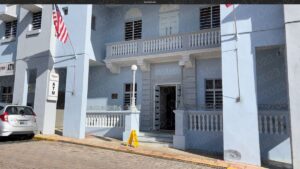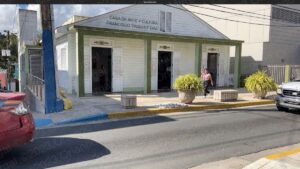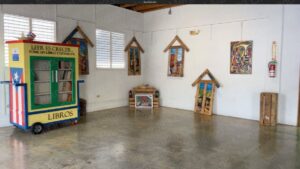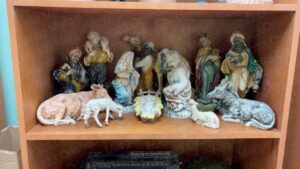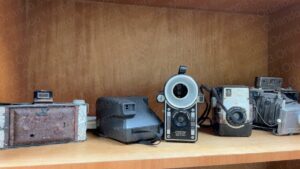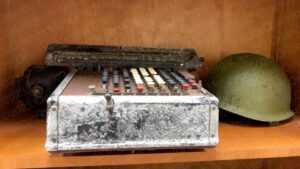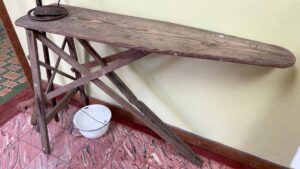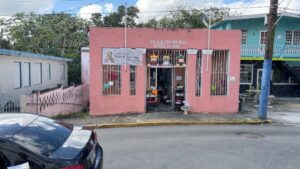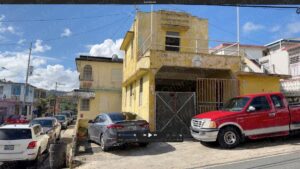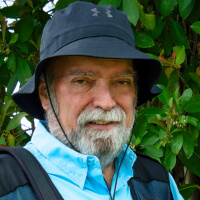Twenty twenty-three has been a busy year at Puerto Rico By GPS. We started with an ambitious goal: “to visit all 78 municipalities in Puerto Rico to produce a video and however many blog posts were warranted for each township”. The idea was —and still is— to end up with the most comprehensive collection of photographs, video and articles about Puerto Rico anywhere on the Internet. That’s a mouthful. I know!
In some cases it has been easy and in others it has been hard. In some cases the local government has received us with open arms and in others they haven’t moved a finger.
So far we’ve been batting a 50% average. That’s not bad! Carolina and Gurabo received us with open arms and we produced extensive videos and articles about both towns. Neither of them was perfect, but both of them were great.
Then you have Trujillo Alto and Caguas. The former recently had its mayor removed on corruption charges, so I decided to go it alone. I figured that they had enough on their plate to draw more attention. As for Caguas, I tried contacting them twice and received no answer at all. So I visited like any other tourist would and did what any other tourist would do. In fact, I did more, because I mentioned the good and the bad. Most tourists just slam you on Yelp.
That brings us to Aguas Buenas, the fifth town on our schedule. We tried contacting them by email, but we never received an answer. So, on the morning of February 24 my wife and I jumped in our car and headed out to the town of the “good waters”.
Aguas Buenas is a small town that sits on the eastern part of Puerto Rico’s mountainous region called “la Sierra de Cayey”. Geographically it’s south of Guaynabo and northwest of Caguas. Aguas Buenas was founded on May 25, 1838 when it was officially separated from the nearby town of Caguas. It is believed that the name “Aguas Buenas” arose from the old “Aguabuena” neighborhood of Caguas, and in honor of the pure and crystalline waters of its springs, especially a large spring of crystalline waters that used to run along “El Destino” street, today “Monserrate” street.
There are many ways to get to Aguas Buenas. There are roads from Bayamón, from Guaynabo, from Caguas and from Cayey. And then there’s road 173, which connects with road #1 (known among Puerto Ricans as “la carretera vieja de Río Piedras a Caguas”) “the old road between Río Piedras and Caguas”.
Río Piedras was a town that was merged with San Juan back in 1951. That’s a story that I might write about on a future post, but for now let’s just say that road 173 was the one that we took. The entire trip was about 45 minutes long, counting the fact that there was road work being done on 173.
We got to Aguas Buenas around 10:00am and by 1:00pm we were gone. After running around town for what seemed like forever, looking for a parking spot, we finally parked on one of the backstreets and walked to the Luis A. Ferré square. Luis A Ferré was Puerto Rico’s third democratically elected governor and ran for the Island’s pro-statehood party.
When we got there there was a crew power washing the concrete and pruning the plants. It’s always a positive sign when you see government workers taking good care of the town’s public areas, even if that meant that we couldn’t shoot certain areas because the were “all wet”. And now that I mention it, our general impression of Aguas Buenas was that the government keeps the town clean and the streets (albeit quite narrow) are in pretty good conditions.
Oh, and by the way, there’s a tree at the Luis A. Ferré square that’s over 100 years old. Of course, we learned about it after the fact. However, you can see it on our video, or “in person” if you decide to visit.
Leaving the Luis A. Ferré square our next stop was at the Holy Spirit Parish, located on the eastern corner of the square. Our first surprise was to actually find it open. When I was a child most churches were open all the time, but now the general rule seems to be the opposite. I suppose that it has to do with rising crime rate and the possibility of vandalism.
In any case, the church is nice, well kept and quite large. According to my findings online it was founded in 1844, but the design and architecture say otherwise. It would’ve been nice to have someone to ask, but there was no one there.
Another thing that I liked about this temple was the illumination level. And this is just a personal preference. Sometimes churches tend to be rather dark and gloomy. This doesn’t play well with my astigmatism. I prefer bright happy places. To me they are more inviting. So in that sense this church scored an A.
A few steps from the parish there’s a large gray building, on the north side of the square, that is shared by a credit union and City Hall. The structure was boxy and totally devoid of any personality, so I hardly think that it dates back to the 1830’s. Once again, that’s just my opinion.
We did stop at City Hall (like we often do) to ask questions and have them point us in the right direction, but the attendant couldn’t answer any of them. And let me stop right here, because I don’t want this post to sound like a rant, or that I’m doing a hatchet job on the town of Aguas Buenas. There’s no crime in ignorance. The real crime is the lack of training, and that’s a managerial problem. If you assign someone to the lobby desk at city hall, isn’t it reasonable to assume that she’ll be fielding questions all day long?
Given her inability to answer any of our questions, the young lady did the next best thing. She sent us across the square to the ‘Francisco “Paquito” Díaz’ House of Art and Culture, a small museum established in a beautifully restored wooden building, typical of beginning of the 20th century Puerto Rican architecture. The double hung doors and high vaulted ceilings were simply gorgeous.
- Austere and simple, but nice.
- Porcelain figures.
- Cameras
- Adding machine
- Ironing board.
- Podcasting anybody?
The museum attendant was a little more knowledgeable and very friendly so we spent a while there reminiscing with their small collection of old artifacts.
After leaving the museum we walked down the side street to a small concrete building, painted in bright pink, that had a sign over the door that reads: “Sala de Emergencia, Marzo 20, 1926”. In case your Spanish is kind’a rusty, that means: “Emergency Room, March 20, 1926”. According to our friend at the museum, this was the first emergency room in Aguas Buenas. It was also the house, at one time, of Puerto Rican nationalist leader Pedro Albizu Campos.
Today it’s sort of a “good will” where people bring all sorts of belongings to help the needy. There are also dozens of pictures on the wall of the Puerto Rican nationalist hero.
Finally we walked several blocks to what used to be the “Maximiliano Merced Fire Station“. Granted, it’s a historic site, built in 1955, and included in the “National Archive of Historic Places”. But now it’s simply a dilapidated building which you’d never guess was a fire station if it weren’t for the “fireman’s helmet” above the entrance.
And yet, somehow, most of the online information about Aguas Buenas mentions this structure as a tourist attraction. Really?
One of the reasons —and probably the main reason— why I established this blog back in 2013 was to tell english-speaking visitors about interesting places outside of San Juan. I’m talking about people like me, who like to travel on their own, without a schedule or definite route and yes, guided by their GPS. And believe me, there are plenty of people like me and plenty of places in Puerto Rico that are worth a visit. But what I can’t do is lie to them. That’s why our slogan since day one has been: “we tell it like it is”.
It’s not a hatchet job, it’s just what we found.
Furthermore, when we contact a “tourism manager” or a mayor’s office, asking for guidance, it’s not to embarrass them. It’s an opportunity to put their best foot forward. But when we get no answer, guess what? We become regular tourists. And guess what regular tourists do? They wander around, devoid of “official” knowledge and simply voice their opinions. Why? Because that’s what people do these days. We live in the era of citizen journalism, where everyone carries a camera and everyone has an opinion. And they voice it!!!
So here’s our opinion of Aguas Buenas. It’s a good place to stop on your way to somewhere else. It could be a lot better, but it needs work. Or maybe I’m just wrong. Maybe they’re not interested in attracting tourists. In that case they’re doing a great job.
It’s no accident that their neighbors southeast get lots of visitors. They’ve done the work, so they’re reaping the rewards. And in case you’re wondering, they didn’t answer our call either. But hey, “we tell it like it is”. Caguas is a great place to visit.
After leaving Aguas Buenas we still had most of the day left so we thought “why not jump over to Guaynabo —the next town on our schedule— and explore one of their museums”? But guess what? The one that we chose had its website hacked, no one was answering the phones and when we finally got there we were told that it was closed without a scheduled reopening date. I guess Friday just wasn’t our day.
We finally decided to head back to the office and start editing our footage. You can watch the video on the right hand column or watch several of our programs on our video page.
Until next time,
©2023,Orlando Mergal, MA
____________________
Bilingual Content Creator, Blogger, Podcaster,
Author, Photographer and New Media Expert
Tel. 787–750-0000, Mobile 787–306-1590
